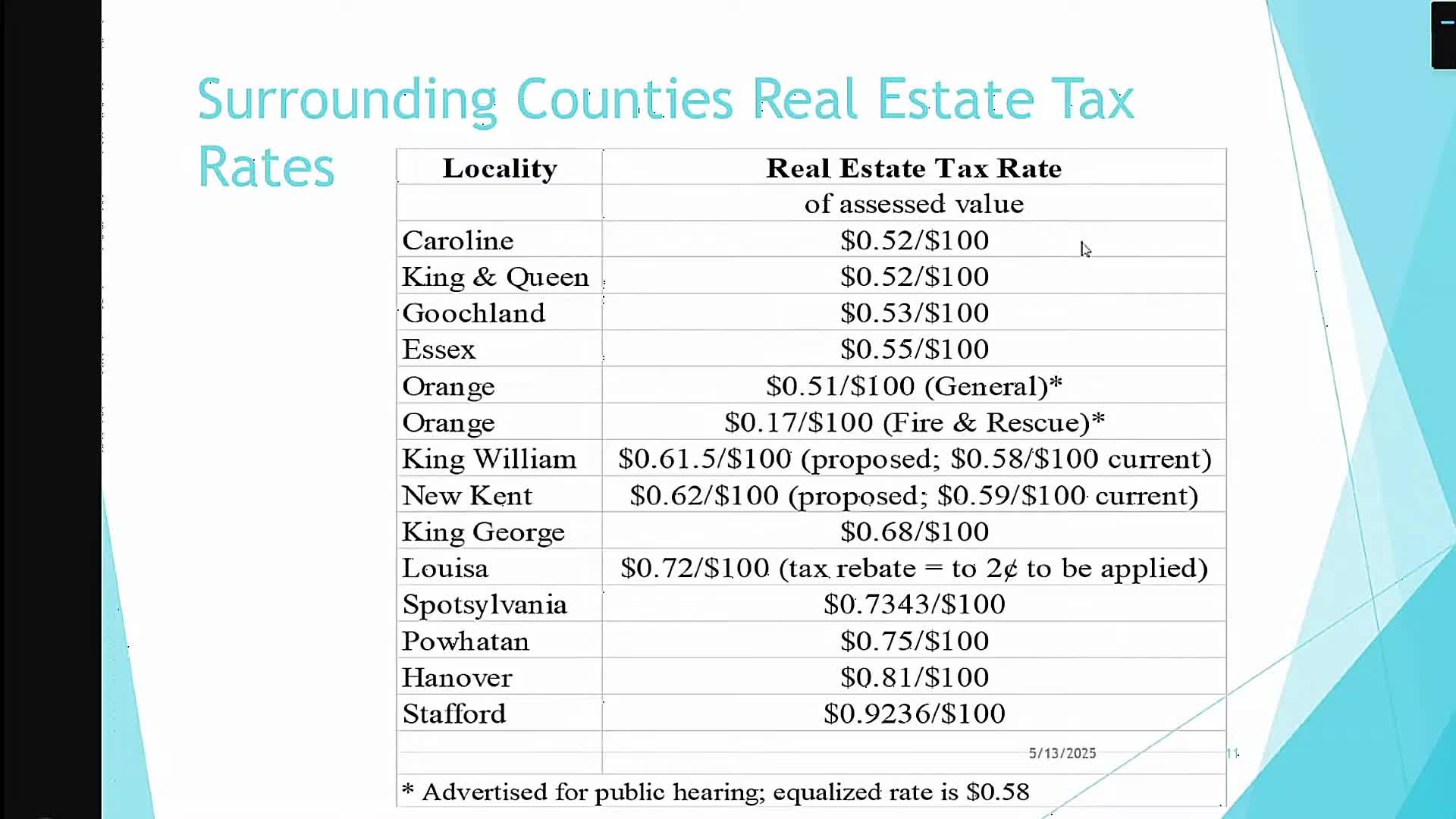Caroline County explores budget impact of real estate tax changes
May 14, 2025 | Caroline County, Virginia
Thanks to Scribe from Workplace AI , all articles about Virginia are free for you to enjoy throughout 2025!

This article was created by AI using a video recording of the meeting. It summarizes the key points discussed, but for full details and context, please refer to the video of the full meeting. Link to Full Meeting
A significant topic of conversation centered around the county's real estate tax rate, which was recently adjusted from 50 cents to 52 cents per $100 of assessed value. This increase, while modest, is projected to generate approximately $550,000 in additional revenue. Board members emphasized the importance of understanding how tax rates correlate with the overall financial health of the community, noting that comparisons with neighboring Stafford and Spotsylvania counties can be misleading due to differing property values and revenue generation capabilities.
As the discussion progressed, it became clear that Caroline County's tax rate, while lower than that of Spotsylvania, does not necessarily reflect a lesser tax burden on its residents. Board members pointed out that the median home values in Spotsylvania are higher, leading to greater tax bills despite a higher tax rate. This nuanced understanding of tax implications is crucial for residents who may perceive the county's lower rate as an indication of inadequate funding for essential services.
The meeting also addressed the upcoming budget process, with public hearings scheduled for May 27 and a final adoption set for June 10. The board is keen on ensuring transparency and community involvement in the budgeting process, which includes considerations for various departments, including the sheriff's office, which has seen increased operational costs.
Public comments during the meeting provided a platform for residents to voice their concerns, with one attendee highlighting the challenges of accessing grocery stores in the county. This feedback underscores the ongoing need for the board to balance fiscal responsibilities with the everyday needs of its citizens.
As the meeting concluded, the board members reiterated their commitment to prudent financial management, aiming to stretch every penny while maintaining essential services for the community. The discussions from this meeting reflect a broader narrative of local governance, where financial decisions directly impact the quality of life for residents in Caroline County.
Converted from Caroline County Board of Supervisors 05/13/25 meeting on May 14, 2025
Link to Full Meeting
Comments
View full meeting
This article is based on a recent meeting—watch the full video and explore the complete transcript for deeper insights into the discussion.
View full meeting